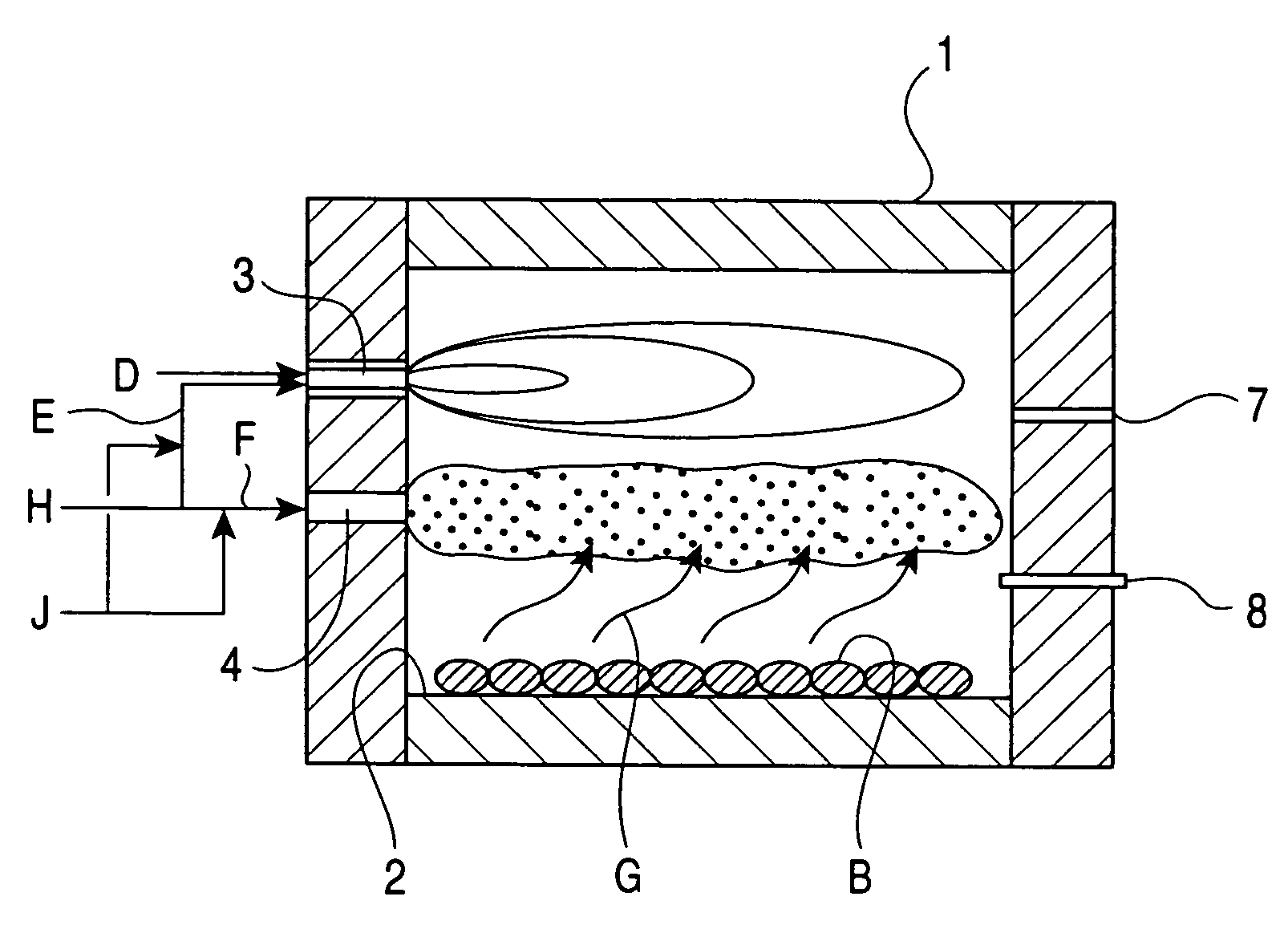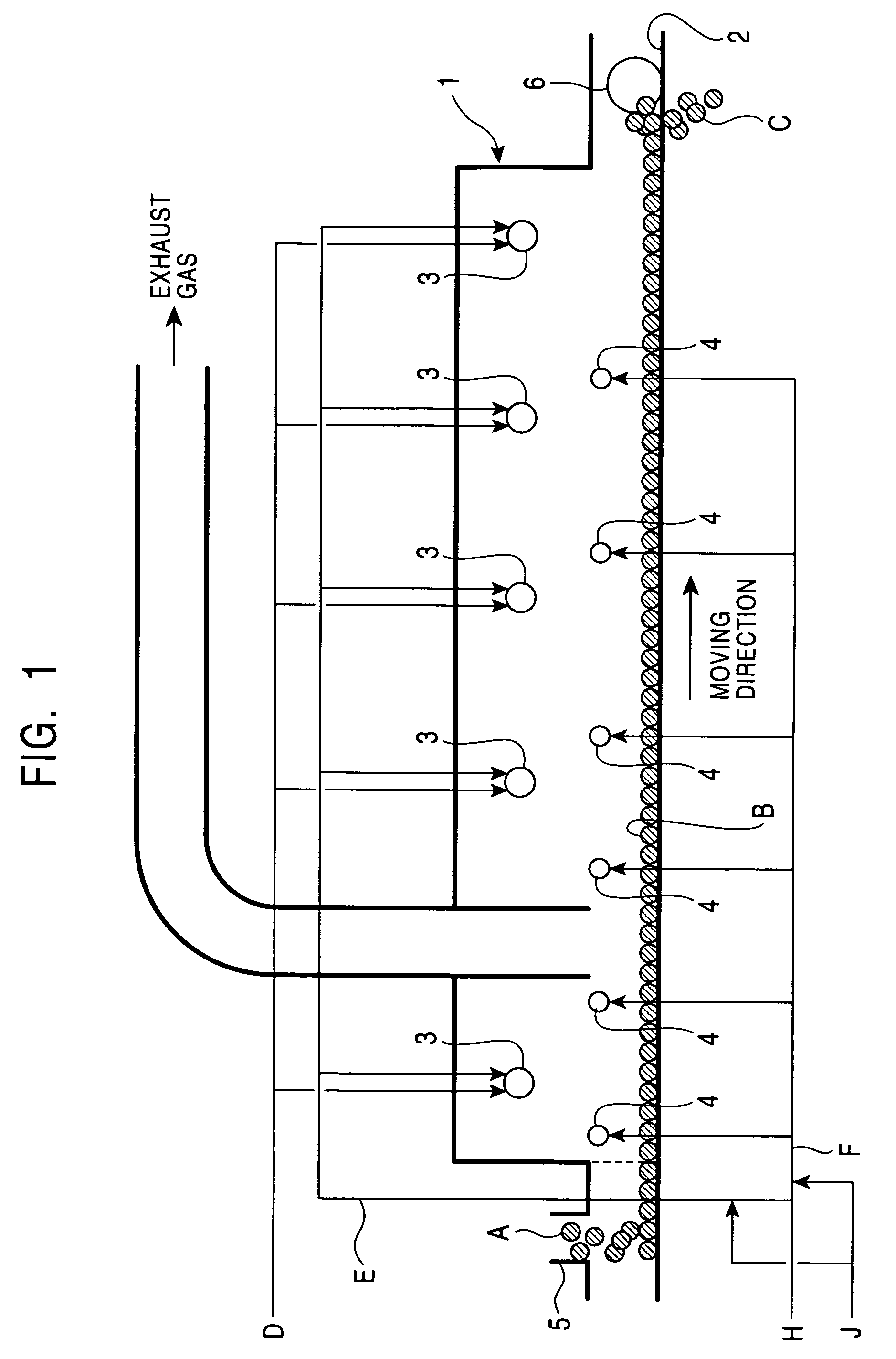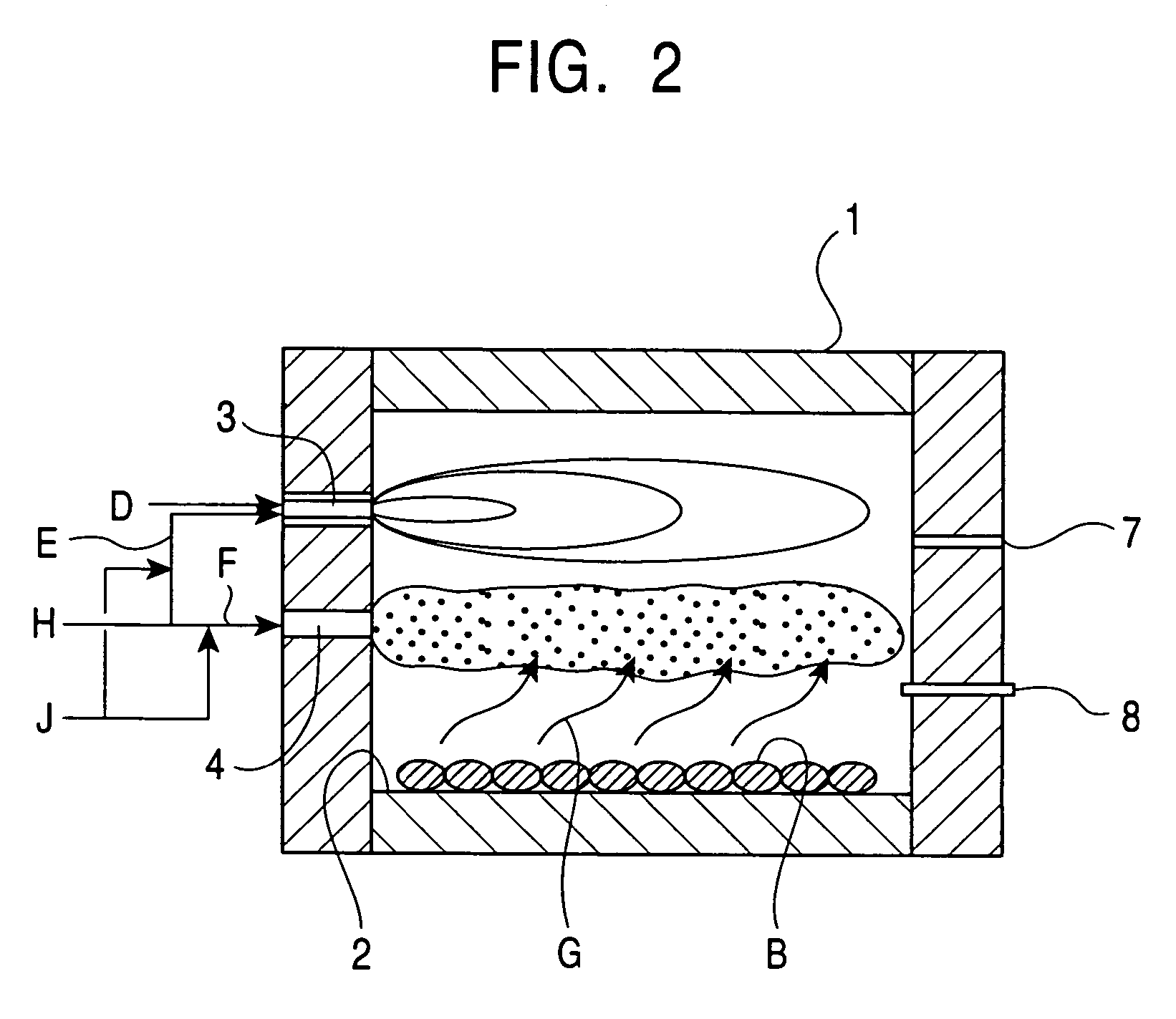Method for manufacturing reduced metal
- Summary
- Abstract
- Description
- Claims
- Application Information
AI Technical Summary
Benefits of technology
Problems solved by technology
Method used
Image
Examples
first embodiment
[0022]FIGS. 1 and 2 are schematic views of a rotary hearth reducing furnace according to an embodiment of the present invention. FIG. 1 is a vertical cross-section in the longitudinal direction (i.e., in the circumferential direction) of the rotary hearth reducing furnace wherein the doughnut-shaped rotary hearth reducing furnace is cut between a material-feeding unit and a product-discharging unit and the cut portion is then laid out in a linear shape. FIG. 2 is a vertical cross-section in the radial direction of the rotary hearth reducing furnace. Referring to FIGS. 1 and 2, a reducing furnace 1 includes a hearth 2, a plurality of primary burners 3, a plurality of secondary combustion burners 4, a material-feeding unit 5, a product-discharging unit 6, a plurality of gas-sampling holes 7, and temperature gauges 8.
[0023]Carbonaceous material-containing iron ore pellets A, i.e. pellets of a metal oxide including a carbonaceous reductant, (hereinafter also referred to as pellets A) ar...
second embodiment
[0034]Referring to FIG. 2, the gas-sampling holes 7 are disposed in the vicinity of the primary burners 3. Atmospheric gas in each position in the furnace is taken out from each of the gas-sampling holes 7 to analyze the gas composition. If the CO concentration of the atmospheric gas at a primary burner 3 is less than 2 volume percent, preferably less than 4 volume percent, the oxygen concentration in the primary combustion air E of the primary burner 3 is preferably controlled to be lower than the oxygen concentration in the secondary combustion air F.
[0035]In general, unburned gas such as CO gas located in the vicinity of a burner decreases NOx generation. Accordingly, only in the primary burners 3 around which the content of the unburned gas such as CO gas in the furnace is small, the oxygen concentration in the primary combustion air E may be controlled to be lower than the oxygen concentration in the secondary combustion air F, thus suppressing the NOx generation. On the other ...
third embodiment
[0036]As a criterion whether the oxygen concentration in the primary combustion air E is controlled to be lower than the oxygen concentration in the secondary combustion air F or not, a degree of reduction (DR) in atmospheric gas in the furnace, i.e., DR=(CO+H2) / (CO+CO2+H2+H2O) is preferably used, instead of the CO concentration in the atmospheric gas in the vicinity of each of the primary burners 3. That is, only in the primary burners 3 wherein the degree of reduction (DR) in the atmospheric gas in the vicinity of the burners is less than 0.05, the oxygen concentration in the primary combustion air E may be controlled to be lower than the oxygen concentration in the secondary combustion air F.
[0037]The atmospheric gas in the furnace includes unburned gas such as CO and H2, and burned gas such as CO2 and H2O. The H2 gas suppresses the NOx generation in the same way as the CO gas, whereas the gas such as CO2 and H2O accelerate the NOx generation. Furthermore, the ratio of CO and H2 ...
PUM
| Property | Measurement | Unit |
|---|---|---|
| Percent by volume | aaaaa | aaaaa |
| Percent by volume | aaaaa | aaaaa |
| Concentration | aaaaa | aaaaa |
Abstract
Description
Claims
Application Information
 Login to View More
Login to View More - R&D
- Intellectual Property
- Life Sciences
- Materials
- Tech Scout
- Unparalleled Data Quality
- Higher Quality Content
- 60% Fewer Hallucinations
Browse by: Latest US Patents, China's latest patents, Technical Efficacy Thesaurus, Application Domain, Technology Topic, Popular Technical Reports.
© 2025 PatSnap. All rights reserved.Legal|Privacy policy|Modern Slavery Act Transparency Statement|Sitemap|About US| Contact US: help@patsnap.com



